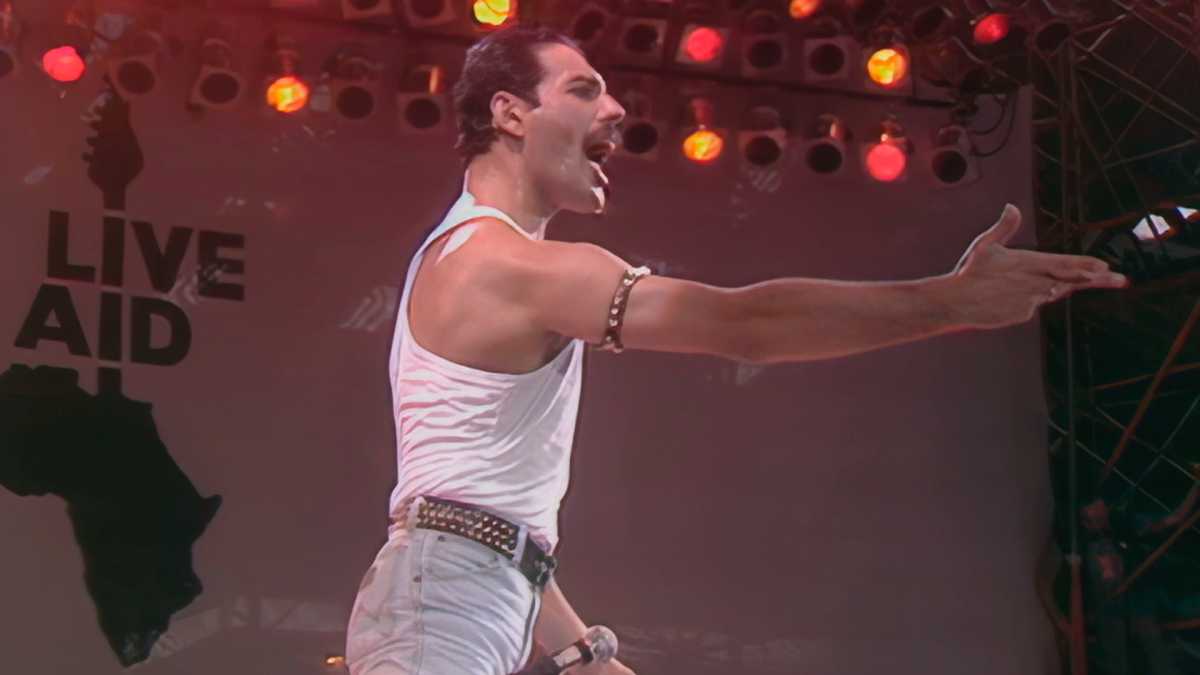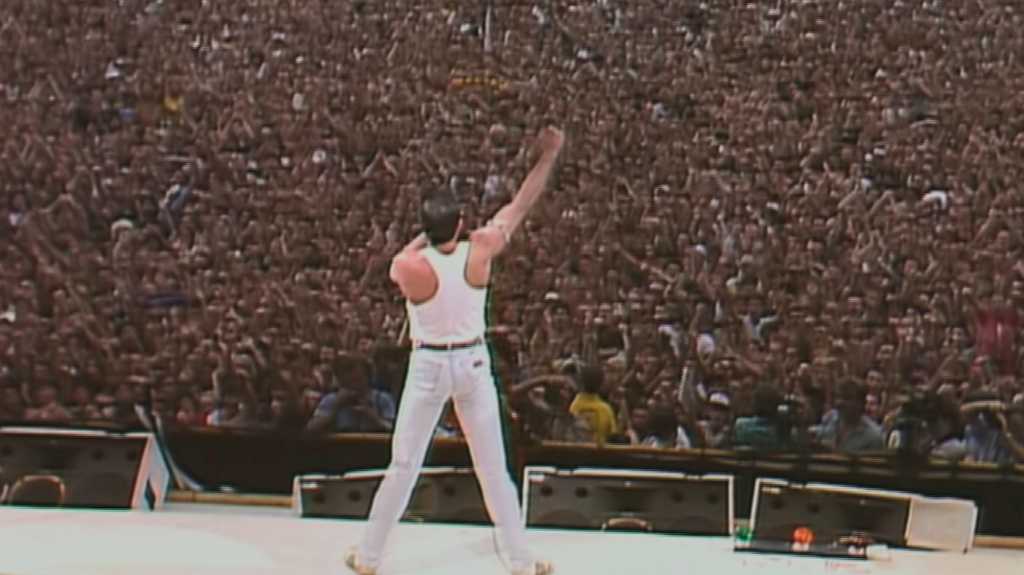This week I’ve had messages from both my parents about the 40th anniversary of Live Aid, a charity concert organised by Bob Geldolf on both sides of the Atlantic to raise money for famine relief in Ethiopia. The BBC recently aired a two-part documentary about this pivotal moment in music history.
While the event featured a wide array of musicians such as Madonna, Paul McCartney, David Bowie and Led Zeppelin, there’s one performance that stands out above all others: the 21-minute set from British rock band Queen, fronted by the late legend, Freddie Mercury.
Like many people from around the world, I’ve watched this set multiple times, in true awe of the showmanship on display and the stadium’s atmosphere, with the group playing some of their biggest hits back-to-back, such as Radio Gaga, Bohemian Rhapsody and We Will Rock You – and not to mention Freddie’s playful back and forth with the crowd.
It’s such an important moment in pop culture that even people who weren’t there in person remember the moment when they watched it, as though they were an extension of this magical crowd on their TV screens. And truthfully, I doubt we’ll ever see anything like it ever again.
Why? It’s simple. Smartphones.
Capturing concerts on our smartphones is the norm
When you watch Queen’s performance, every person in that crowd appears to clap in sync, completely immersed in the stage and the music of that moment. But if you turn on any performance or concert broadcast live, like Glastonbury, you’ll instead see at least half of the crowd looking to capture the moment on their own device.
I can’t blame audiences for wanting to do that – after all, it’s nice to look back on these memories… and a boost to your ego to flex on your socials that you’re there, in the room (or field). I’ve done it myself from time to time… and on a professional level, these gigs are a sure-fire way to test out a smartphone’s video capabilities. But as such, that collective hive mind magic is broken.
People aren’t singing, dancing and clapping in the moment. Instead, they’re focusing on keeping their camera still, watching the performance unfold from a tiny screen, rather than what’s directly in front of them. It sounds a bit sad when you put it that way.
And while yes, some users may only do this for a matter of seconds, when that’s replicated throughout a stadium and it’s clear from a big screen view how many people are doing it, it looks dystopian. This is often most obvious when acts first come on the stage, as that seems to be the moment people want to capture the most. As a result, if a TV camera pans to a crowd, you’ll see it littered with phone screens recording the same thing, often in what’s (let’s face it) much crappier quality.
Some viewers’ behaviour is even more egregious – I once went to a live score of War of the Worlds, and the woman in front of me livestreamed it to her personal Facebook page.
I wouldn’t have minded, had she not been doing it for the entire concert, at a jaunty angle, to (what I could see) no more than two viewers. My concentration was broken by the glare of her smartphone in my peripheral vision. But I digress.
The main point is smartphones distract others from the stage performance, period. But that’s not the only issue.
These clips also take away from the ‘TV moment’ of it all. If you weren’t one of the lucky few who could get a ticket to Wembley Stadium for Live Aid, you’d instead see it on one channel, at the same time as everyone else. That’s why people remember it the way they do. It was revolutionary.

Band Aid Licensing Ltd. (Company Number 13272500) of 1 Princeton Mews, 167-169 London Road, Kingston Upon Thames, Surrey, KT2 6PT. John Kennedy – john@maximusagency.co.uk.
Now, dodging clips of concerts you’re going to see is a minefield. As an example, I’ve got tickets to see Lady Gaga, who kicked off her Mayhem Ball just last night, and already I’ve been spoiled by my Insta feed. I know some of the songs and outfits from the setlist that I was hoping to be surprised by in person.
I can attempt to get around this by blocking keywords and trying to alter my algorithm, but it’s going to take some time and effort to do this. I don’t doubt that others are experiencing the same problem for the Oasis reunion tour, which started earlier this month.
I feel like I’ve seen artists such as Beyonce, Taylor Swift and Sabrina Carpenter all second-hand, thanks to social clips. Even when these concerts are filmed and televised, I’m not in a huge hurry to watch them. After all, I’ve already seen the most talked-about bits from my social feed.
So, how can we recapture Queen’s Live Aid concert magic?
The solution seems simple, right? Ask for phones to be put away for gigs. But that’s not always possible in practice.
For example, smartphones are now essential for ensuring someone is safe, especially if a concertgoer is meeting up with a family member or friend afterwards to get home. A blanket ban may cause problems for that and delay the possibility of someone getting contacted in an emergency.
Some artists have requested that smartphones not be used during their concerts, such as Adele, Bruno Mars and Madonna. Sabrina Carpenter even admitted she was considering following this trend. To help fans follow this rule, they may be given a pouch or box to put their phone in, or a sticker to cover the camera.
But again, not everyone will respect an artist’s wishes in today’s day and age. Just have a look at YouTube, Instagram or TikTok for any of the stars listed above, and I guarantee you’ll find clips from their concerts sneakily filmed by fans.
Even if some artists followed this trend, others may not wish to. After all, social media is often free publicity for them. There are distraction techniques, such as coloured wristbands seen on the Cowboy Carter and Coldplay tours, that get audiences focused on tech that’s not a phone, but that won’t deter everyone.
Unfortunately, the reality is that we may never get to experience concerts in the same way that they were in the eighties. That Queen Live Aid performance was a time capsule, and something that can likely never be witnessed in the world we live in now.
If you want to take a step closer, then the simplest thing you can do when you next attend a show is to take a photo before the action starts and capture a snapshot for your own memory (or Insta), and then put your phone away and just be in the moment. I promise you’ll have a better time if you do.

